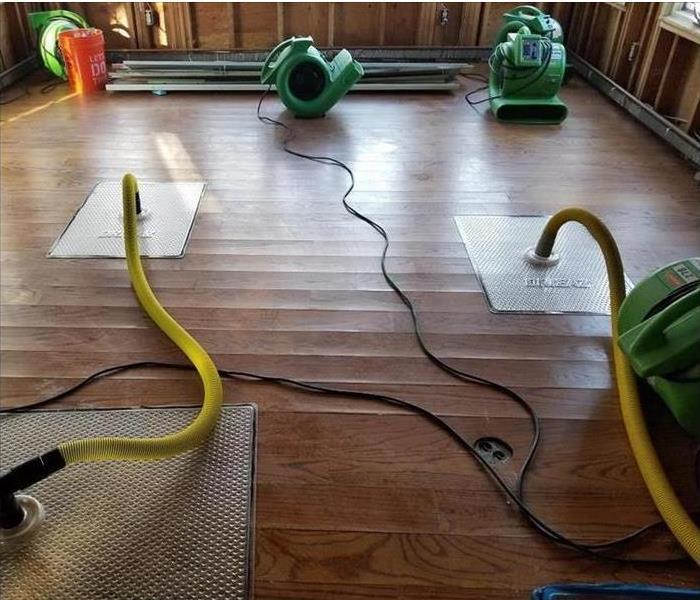Advanced Drying Techniques
6/4/2020 (Permalink)
After a flood, it is critical to dry water-damaged properties and contents as quickly as possible. In the past, water damage restoration contractors had few options available to them when performing water damage restoration. Equipment was restricted in its availability, variety, efficiency, and effectiveness. It was not only slow but would also result in removing and discarding damaged contents.
Then, of course, it was necessary to install new materials, paint, etc. The result was a long period of disruption to the occupants and extra expenses for insurance companies. Today, however, the “science of drying” has improved significantly. Thanks to modern equipment, we can completely restore water damaged properties and contents with minimal intrusion.
Some of the latest drying technologies include:
- LGR Dehumidifiers — Using LGR Dehumidifiers, technicians can reduce the relative humidity to as low as 10%. These tools can remove up to 16 gallons of water from the air per day. Older dehumidifiers were able to reduce the humidity to only 40%, removing about five gallons of water per day. This disparity represents a vast improvement in efficiency, resulting in faster drying times – 24 to 48 hours as opposed to four or more days with older equipment.
- Desiccants — In the right setting, restoration professionals will turn to a desiccant dehumidifier. Desiccants release very dry and warm air (5% relative humidity and 110 degrees F) into humid areas, eliminating moisture. They use silica gel to absorb humidity from the air. Desiccants operate very effectively, even if the environment is below freezing.
- Intra-wall Drying — This technique helps the drying process inside of walls without removing drywall. In this process, baseboards are removed, and small holes are drilled through walls near the base. Technicians then push air into the cavity behind the wall. This dramatically reduces drying time for the wall, often to less than half of what it would take to dry it by other methods. The forced air approach also works for certain types of insulation, again eliminating the need to remove drywall to gain access. This method is especially appropriate when water damage originates from above the affected room. In many cases, it’s the only way to effectively save the walls.
- Rescue Mat Systems — Today’s powerful water extraction equipment is far more effective at removing moisture than simple vacuum units, a common practice in times past. Rescue mat systems can extract water from hardwood floors efficiently, leaving the underlying pad slightly moist but not wet.
Other benefits of using advanced drying tools
- Lower expenses — Wet carpet, pad, and drywall can often be completely restored and do not need replacement. This results in lower costs for the loss, and it allows the occupants to return to their normal lives much sooner with far less disruption. Also, modern technology can prevent the costs related to older methods, such as turning back and/or removing carpet; removing, discarding, and replacing the pad; replacing the new carpet or relaying the old.
- Preventing mold — Thanks to faster drying, mold and other fungi have less time to develop. This helps alleviate possible health problems, such as respiratory discomfort and allergic reactions, which fungal contamination can cause. In addition, mold can weaken structural materials, such as drywall and wood framing, to the point that they must be replaced. Using advanced dehumidification systems removes moisture and thus helps prevent mold growth. With little or no moisture present, mold and mildew either do not start or die very quickly.
- Other benefits of rapidly removing moisture include the prevention of irreversible swelling in porous materials, such as paper and wood; shrinkage in some fabrics, such as upholstery and drapes; rust occurring on metals like doorknobs and hinges; and damage to electronic equipment that could occur with high levels of humidity.
Most importantly in a situation dealing with water damage is how effective professionals are now. SERVPRO of Salem/Peabody/Marblehead's knowledgeable restoration professionals invest in the latest equipment and have the training and expertise to properly remove moisture. That means your home will return to its original state more quickly, minimizing all related costs and inconvenience.
For water damage caused by storms and floods, as well as fire, smoke, and mold remediation services, call SERVPRO of Salem/Peabody/Marblehead...978.744.4545






 24/7 Emergency Service
24/7 Emergency Service
